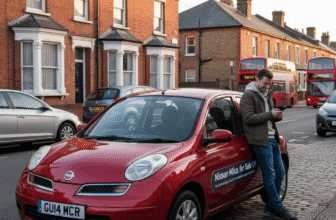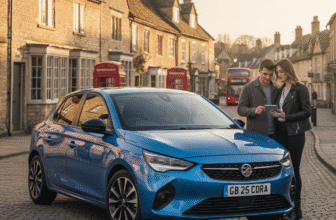
Your Ultimate Guide to Finding the Perfect Car for Sale Near You in the UK
The thrill of getting a new car is undeniable. Whether it’s your very first set of wheels or a much-needed upgrade, the journey from browsing to buying is an exciting one. But in today’s vast automotive marketplace, the simple search for “cars for sale near me” can feel like opening a Pandora’s box of endless options, jargon, and potential pitfalls. Fear not, fellow UK driver! This comprehensive guide is your roadmap to navigating the local car market with confidence, ensuring you find a reliable vehicle that fits your lifestyle and your budget, right on your doorstep.
Gone are the days of trekking from one dealership to another, spending entire weekends on the hunt. While visiting a forecourt still has its place, the modern car buying journey often begins online. The digital world has brought the showroom to your living room, but with this convenience comes the need for a savvy approach. This article will walk you through every step, from refining your initial search to driving away with a smile on your face and peace of mind.
Step 1: Defining Your Needs – More Than Just a Pretty Paint Job
Before you even type that famous search phrase into your preferred search engine, it’s crucial to take a step back and do some honest self-assessment. What do you *really* need from a car? Getting this part right will save you countless hours and prevent you from being swayed by a sporty two-seater when what you actually need is a practical family wagon.

- Lifestyle and Usage: Are you a city dweller needing a nimble runaround for tight streets and easy parking? Or perhaps you’re a countryside resident who needs something more robust for rural lanes? Consider your daily commute, the average number of passengers you’ll carry, and whether you need a large boot for shopping, sports equipment, or the family dog.
- Budgeting for the Full Cost: Your budget isn’t just the sticker price of the car. It’s the total cost of ownership. This includes insurance (which can vary wildly depending on the car’s group), road tax (Vehicle Excise Duty – VED), estimated fuel consumption (MPG), and potential maintenance costs. A cheaper car with high running costs can quickly become a financial burden. Create a realistic monthly budget that accounts for all these factors.
- New, Nearly New, or Used? Each option has its pros and cons. A brand-new car offers the latest technology, a full manufacturer’s warranty, and that unbeatable new-car smell. However, it also suffers the steepest depreciation. A ‘nearly new’ or pre-registered car can be a sweet spot, offering a significant discount on the list price with very few miles on the clock. A used car is the most budget-friendly option but requires more diligent checks to ensure its quality and history.
- Fuel Type in a Changing World: The petrol vs. diesel debate has been complicated by the rise of hybrids and fully electric vehicles (EVs). Consider the implementation of Clean Air Zones (CAZ) and Ultra Low Emission Zones (ULEZ) in cities across the UK. If you frequently drive in these areas, an older diesel might incur daily charges. For long-distance motorway drivers, a modern diesel can still be economical. For city driving, a petrol, hybrid, or EV is often the more sensible and future-proof choice.
Step 2: Mastering the Online Search – Where to Look for Local Gems
With your criteria established, it’s time to unleash the power of the internet. The key to a successful search for “cars for sale near me” is using the right platforms and applying smart filters.
- Major Online Marketplaces: Websites like Auto Trader, Motors.co.uk, and Gumtree are the giants of the UK used car market. They allow you to filter by make, model, price, age, mileage, and, most importantly, distance from your postcode. This is your first and best tool for seeing what’s available locally.
- Approved Used Schemes: If you’re looking for a used car with more peace of mind, consider the manufacturer’s own ‘Approved Used’ schemes. Dealerships like Ford, Volkswagen, and BMW will have sections on their websites dedicated to these vehicles. They are typically subjected to rigorous multi-point checks, come with a comprehensive warranty, and often include breakdown cover.
- Local Independent Dealerships: Don’t overlook the smaller, independent garages in your town. A quick search for “used car dealers in [your town]” will reveal local businesses that often pride themselves on customer service and community reputation. They can be a fantastic source of well-maintained, locally sourced vehicles. Check their Google reviews to gauge their reputation.
- Social Media and Community Groups: While it requires more caution, Facebook Marketplace can be a place to find private sale bargains. Look for local car selling groups. Be extra vigilant here, as the protections are far fewer than when buying from a registered trader.
Step 3: The All-Important Checks – Due Diligence is Your Best Friend
You’ve found a potential candidate just a few miles away. It looks great in the photos, and the price is right. Now comes the most critical phase: verification. Skipping these checks is a gamble you don’t want to take.
The Vehicle History Check
This is non-negotiable. For a small fee (around £15-£20), a service like the HPI Check or an Experian AutoCheck can reveal a car’s hidden history. Using just the registration number, you can find out if the car:
- Has outstanding finance (if it does, the finance company legally owns it, not the seller!)
- Has ever been reported stolen.
- Has been written off by an insurance company (categorised as A, B, S, or N).
- Has mileage discrepancies when compared with MOT and service records.
A clean history report is the first green light you need before proceeding.
The MOT History Check
The UK government provides a free online service to check a vehicle’s MOT history. All you need is the registration number. This will show you if the car has passed or failed previous MOTs and, crucially, any ‘advisories’ that were noted. Advisories are issues that weren’t severe enough to cause a failure but may need attention in the future. A long list of advisories for things like tyre wear, brake pipe corrosion, or oil leaks can be a red flag for a poorly maintained vehicle.
Step 4: The In-Person Inspection and Test Drive – Your Senses on High Alert
A car can look perfect online, but the reality can be different. Always insist on seeing the car in person, ideally in dry, daylight conditions, which makes it easier to spot imperfections.
The Walk-Around Inspection
- Bodywork: Look for mismatched paint panels, which could indicate a previous repair. Check panel gaps for consistency. Small dents and scratches are normal for a used car, but be wary of rust, especially on the wheel arches and sills.
- Tyres: Check the tread depth on all four tyres (including the spare, if there is one). The legal minimum is 1.6mm, but it’s wise to look for more. Uneven tyre wear could suggest an issue with the steering or suspension alignment.
- Under the Bonnet: You don’t need to be a mechanic. Check the oil level using the dipstick – it should be a light, honey colour, not black and sludgy. Check coolant levels. Look for any obvious leaks.
- The Interior: Check that all the electronics work – windows, air conditioning, radio, lights, etc. Look for excessive wear on the steering wheel, gear stick, and driver’s seat, which could indicate the mileage is higher than advertised. A damp or musty smell might suggest a leak.
The Test Drive
The test drive is your chance to understand how the car feels and performs. Insist on a drive that covers different types of roads you’d typically use, from slow town driving to faster A-roads.
- Starting Up: Does the engine start easily without any strange noises or clouds of smoke from the exhaust? (Blue smoke indicates burning oil; white smoke can mean a coolant leak).
- On the Move: Listen for any rattling, knocking, or grinding sounds. Do the brakes feel responsive and stop the car in a straight line? Does the steering feel direct, or is there too much play? Work through all the gears – they should engage smoothly.
- Comfort and Practicality: Is the driving position comfortable? Can you see out of it clearly? Take a moment to park it. Does it feel manageable? This is your chance to see if the car truly fits you.
Step 5: Negotiation and Finalising the Deal – Sealing the Purchase
If the car has passed your checks and you’re happy with the test drive, it’s time to talk money. There’s almost always some room for negotiation, especially with independent dealers and private sellers.
Use any legitimate faults you found during your inspection (e.g., tyres that will soon need replacing, a service that’s due) as leverage for a small discount. Be polite but firm. Your research on what similar cars are selling for will be your greatest asset here.
Once a price is agreed:
- Paperwork is Paramount: Ensure you see the V5C registration document (logbook). The seller’s name and address should match the details on the V5C. Check the Vehicle Identification Number (VIN) on the document matches the one on the car (usually found at the base of the windscreen and on a plaque inside the driver’s door).
- Payment: For dealer sales, card or a bank transfer is standard. For private sales, a bank transfer is the most secure method. Avoid carrying large amounts of cash. Never hand over money until you have the keys, the V5C document, the MOT certificate, and any service history.
- Tax and Insurance: You MUST tax the vehicle in your name and have valid insurance before you can legally drive it away. Vehicle tax is no longer transferable with the car. You can tax the car online instantly using the 12-digit reference number from the green ‘new keeper’ slip of the V5C.
Finding the perfect car for sale near you is a journey, but it doesn’t have to be a stressful one. By arming yourself with knowledge, doing your due diligence, and taking a methodical approach, you can cut through the noise and find a fantastic vehicle right in your local area. Happy motoring!







